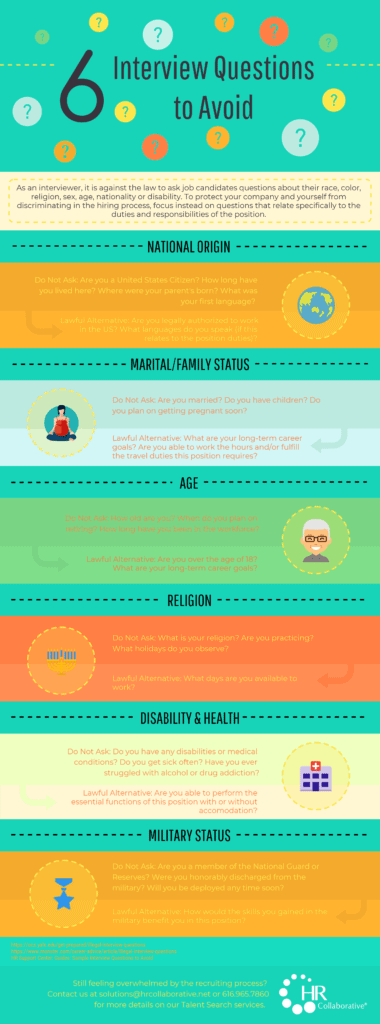Leveraging a Fractional CHRO in an Organization Running on EOS™

In today’s agile business environment, many companies are realizing the benefits of a “fractional” Chief Human Resources Officer (CHRO) – an executive-level HR expert you bring in when and where you need them. This concept works well for businesses operating on the Entrepreneurial Operating System® (EOS®), an organizational framework designed to accelerate company growth and build a healthy culture to sustain that growth.
Marrying the EOS Model® with the insights of a fractional CHRO is a cost-effective and flexible way for organizations to increase capacity to focus on their People Component™ and align their HR processes with their vision, values, and culture.
So, the question arises: How can an organization running on EOS effectively leverage a fractional CHRO? And what makes this combination so powerful?
This article will unpack the unique strengths of this collaboration and provide a roadmap to ensure a seamless blend of the concepts of EOS with fractional HR leadership.
Embracing a fractional CHRO in an organization running on EOS bridges the worlds of agile HR expertise and structured growth.
Understanding the Fractional CHRO
At its core, a fractional CHRO is a seasoned, executive-level HR leader, brought into an organization on a part-time or project-based arrangement. Rather than a full-time executive tethered to the day-to-day, the fractional CHRO operates on a flexible schedule, offering their vast expertise precisely when and where it’s needed.
This fractional executive model has become increasingly popular among a diverse range of businesses, particularly for their CIO, CFO, CMO, and Integrator™ seats. Bringing in experienced leaders on a flexible basis allows fast-growing organizations to punch above their weight and stay agile in the face of a VUCA business landscape.
A fractional CHRO offers the best of both worlds, providing companies access to executive-level HR talent when and where they need and at a price they can afford.
Key Advantages of Fractional CHROs
Focus on People Issues: Adding an HR executive to the leadership team immediately signals an organization’s investment in its culture and People Component. Bringing on a person who Gets It, Wants It, and has the Capacity to Do It (GWC™) when it comes to solving people challenges and enhancing employee experience demonstrates a commitment to the EOS Model.
Cost Efficiency: Of course, attracting a full-time C-suite HR leader with a small-to-midsize business budget is not only unlikely but also financially irresponsible. A fractional CHRO offers the best of both worlds, providing companies access to executive-level HR talent when and where they need and at a price they can afford.
Breadth of Experience: Fractional CHROs often work with multiple businesses across different sectors. This exposes them to a diverse array of challenges and solutions, enabling them to introduce fresh, proven strategies to each new organization they partner with. It also makes them experts in providing Leadership + Management = Accountability (LMA™) for people operations.
Adaptability: Business needs aren’t static. There are peak times and slower periods. With an in-house CHRO, resource allocation remains constant. However, a fractional CHRO can be scaled up or down, adapting to the organization’s changing dynamics and priorities.
Objective Perspective: Being external to daily office politics and culture, a fractional CHRO can offer unbiased assessments. Their distance allows them to spot issues, inefficiencies, or opportunities that someone deeply embedded might overlook.
Traction on People Strategies: With their diverse experience, fractional CHROs can quickly assess an organization’s culture and HR landscape, pinpointing gaps and swiftly executing strategies. Under the guidance of a master in providing LMA for people operations, this results in faster turnarounds and efficient problem resolution for culture and HR gaps.
In essence, while a full-time, in-house CHRO offers stability and deep organizational integration, a fractional CHRO brings flexibility, diverse expertise, and a fresh perspective. For many companies, especially those navigating the complexities of growth or transformation, this blend of attributes can be the catalyst for dynamic and sustainable progress.
Integrating a Fractional CHRO into an Organization Running on EOS
The EOS model provides a robust framework that drives clarity, discipline, and cohesion within an organization. Blending the model with the expertise of a fractional CHRO amplifies several key elements of the framework. Here’s a look at how:
Core Values Reinforcement: A fractional CHRO, with their external perspective, can offer a fresh, unbiased approach to ensuring the company’s values are integrated into all HR processes. They can craft initiatives, trainings, and policies that genuinely resonate with the company’s core values, ensuring employees not only understand but also embody them.
People Component™ Enhancement: Using tools like The People Analyzer™, a fractional CHRO can take an objective view to ascertain if the company truly has the right people in the right seats. They can optimize recruitment, onboarding, and retention strategies to align with this EOS concept, driving higher engagement, retention, and performance.
Vision Amplification: With the Vision/Traction Organizer® (V/TO®) providing a clear roadmap, a fractional CHRO can ensure that HR strategies are meticulously tailored to support and accelerate the company’s goals. Their external viewpoint can identify and bridge any gaps in their people operations that might impede the realization of 3-Year Picture™, 10-Year Target™, and their BHAG.
Data-Driven HR Decisions: EOS emphasizes a data-driven approach, and a fractional CHRO can integrate this ethos into HR. By developing an HR-specific scorecard, they ensure that every HR initiative, from talent acquisition to performance evaluations, is measurable, transparent, and has clear accountability.
Seamless Problem Solving: Leveraging The Issues Solving Track™ (IDS®), a fractional CHRO can systematically address HR-related challenges. Their vast experience across various industries means they bring a repertoire of solutions that can be tailored to the organization’s specific issues, ensuring deeper resolutions rather than superficial fixes.
Continuous Alignment and Evolution: The EOS model drives organizations toward growth. And with growth, comes change. A fractional CHRO, owing to their flexible nature, can continuously adapt HR strategies in tandem with the evolution of the company. Their agility ensures that the HR function remains in harmony with the company’s EOS journey, no matter the direction it takes.
Integrator Delegate and Elevate™ Support: People operations and people problems can often demand a significant amount of an Integrator’s time and attention. A fractional CHRO can flex up and down with those demands, as well as build the infrastructure to proactively reduce their frequency and impact. Taking people operations and employee relation challenges off an Integrator’s plate, allows them to focus on uniting the Leadership team, filtering the Visionary’s ideas, and driving results. Integrators, imagine how much more time and energy you’d have to coach your team, LMA, and develop Rocks!
A fractional CHRO doesn’t merely serve as an add-on to EOS. Instead, they can delve deep into its key components, enhancing their implementation them. This symbiotic relationship ensures that the human element of the company is continually attuned to its growth and vision, supercharging the EOS framework’s effectiveness.
Embracing a fractional CHRO in an organization running on EOS bridges the worlds of agile HR expertise and structured growth. This unique combination supercharges an organization’s ability to align its people strategies with its vision, ensuring seamless progress.
Kickstarting the Fractional CHRO Journey in an Organization Running on EOS
Finding and integrating a fractional CHRO into an organization running on EOS can sound overwhelming, but with a clear roadmap, the transition can be smooth and productive. Here’s a how-to guide:
1. Define the Seat: Before anything else, understand where your current HR systems stand. Are there glaring gaps? Are certain components of EOS, especially related to people management, not optimized? In particular, take this opportunity to reassess your Accountability Chart™ with a Get It, Want It, Capacity to Do It (GWC™) lens. This pre-work will make defining the scope of your fractional CHRO’s seat much easier.
2. Seek Expertise in EOS: Fractional CHROs are well-versed in adapting to an organization’s internal structures and operational frameworks. However, a fractional CHRO experienced with the EOS model will supercharge the relationship. Use your connections in the EOS community or professional networks for recommendations. Or reach out to an HR firm with fractional CHRO talent familiar with EOS (like HR Collaborative!)
3. Communicate Expectations: When engaging with potential candidates, clearly lay out your expectations, both related to EOS and broader HR strategy. Share your V/TO, and understand their working style, experience, and how they envision integrating EOS into their strategy.
4. Dive Deep into Your EOS Journey: Once you’ve selected your fractional CHRO, ensure they undergo an in-depth orientation into your company’s EOS implementation. This might involve several sessions with your leadership team and your EOS Implementer®.
5. Set Measurable Rocks and Clear Accountability: Working with the fractional CHRO, set clear, measurable Rocks. Start tracking HR-related metrics on your leadership Scorecard if you’re not already. Rocks should align with both immediate needs and the longer-term vision. Keep in mind, your fractional CHRO will likely have recommendations on what to start and stop measuring.
6. Establish their Meeting Pulse Early: Quickly identify and incorporate your fractional CHRO into The Meeting Pulse®️ of your organization. Their level of involvement may look different depending on your needs, but remember, your fractional CHRO is a core part of your leadership team. Leverage the EOS model to ensure that the circles stay connected.
Integrating a fractional CHRO into your EOS framework is less about a drastic overhaul and more about defining and onboarding the right person into the right seat. With the right preparation and a commitment to open communication, organizations running on EOS can tap into the transformative potential of a fractional CHRO, aligning their People Component with their growth goals.
Wrapping Up
Embracing a fractional CHRO in an organization running on EOS bridges the worlds of agile HR expertise and structured growth. This unique combination supercharges an organization’s ability to align its people strategies with its vision, ensuring seamless progress.
While the path requires careful integration and open communication, the potential rewards — from cost efficiency to enhanced adaptability — make it an endeavor worth pursuing. As the business and labor landscapes continue to evolve, such innovative collaborations will be at the heart of the next wave of organizational excellence.
Finding Your Fractional CHRO
Embarking on the EOS journey demands the right people by your side. At HR Collaborative, we pride ourselves on our matchmaking prowess. We don’t just offer a fractional CHRO; we find the perfect fit for your company’s unique culture and EOS trajectory.
Let us connect you with an expert who resonates with your vision and amplifies your growth. Discover the difference the right match can make. Reach out to us today!
Share This Article
Our Most Recent Articles

Last Minute Earned Sick Time Changes Michigan Employers Need to Know
Last-minute legislative changes have altered Michigan’s Earned Sick Time Act (ESTA). Here’s what employers need to know.

Answers to Michigan Employer’s Biggest Questions on ESTA and IWOWA
Questions about Michigan’s ESTA and IWOWA changes? Get answers to the biggest questions about sick leave, minimum wage, tip credit, and more.

The Future of HR Tech: Chatting with Grand Rapids Experts
We brought together a panel of experts to discuss the growth of HR technology and how to leverage it to boost productivity and retention.

How to Use Employee Engagement Survey Results
Employee engagement surveys are more than just a tool for gauging workplace satisfaction—they are a critical resource for improving organizational culture and boosting productivity. These surveys offer valuable insights into…

How to Choose the Right HR Management Solution
HR is the backbone of any organization’s success; if people don’t get paid on time and correctly every time, a company can’t function. In today’s competitive labor market and changing…

7 Things to Look for in an HR Services Company
In today’s business world, talent is what sets companies apart. That’s why a strong HR function is such a strategic differentiator. It ensures that the organization is investing wisely in…

Outsourcing of HR vs. Fractional HR Staffing: What’s the Difference?
Whether you’re a small business looking to streamline operations or a growing company navigating complex workforce needs, managing HR functions efficiently can be a challenge. That’s why many companies turn…

Understanding the Types of HR Consulting Services
Learn about the different types of HR consulting services and how they can help organizations of all sizes attract and retain talent and grow effectively.

Strategic HR Management: Align HR Goals & Business Objectives
Discover how strategic HR management allows your human resources team to streamline and align its goals with your organization’s business objectives.

HR Open Enrollment: A Guide to Getting Started
This guide to HR open enrollment helps human resources experts understand how to navigate open enrollment and the steps you need to take.

Examining the State of Technology in HR
The use of technology in HR is making departments more agile and primed for growth than ever before. Learn about recommended HR software and new trends.

A Guide to HR Staffing Agencies
Streamline hiring with HR staffing agencies! Access top talent, save time, and find the perfect fit for your team. Learn more and contact us today!

The Guide to HR Training for Managers
Learn how and why comprehensive HR training for new managers is necessary to transform your business and add to its overall success.

The Role of HR in Remote Workforce Management
HR plays a key role in remote workforce management, including setting expectations, fostering communication, and acting as leaders.

How to Become an Employer of Choice
Become an employer of choice who stands out in the competitive job market by being a talent magnet for the best and brightest employees.

The Role of HR in Compensation Planning
Adding HR professionals to the compensation planning process will help it go more smoothly and get you a better final result—which will have major benefits for the company. According to…

How the Fractional Staffing Model Helps Businesses
For growing businesses finding the right balance for staffing can be a constant challenge, especially for non-customer-facing roles. You know that strong back-of-the-house operations like IT, Marketing, Finance, and HR…

Benefits of HR Consulting Services for Small Businesses
Working with HR consulting services for small businesses can help you save time and money while also improving retention and productivity.

5 Steps to Hiring Your Next Fractional HR Leader
Working with a fractional HR leader allows your company to accelerate its growth. Here are specific steps you need to take to find the right one.

HR Compliance Checklist
We’ve created a helpful HR Compliance Checklist to serve as a general guide for your business to ensure your policies and processes are compliant (and effective).

The Real Cost of DIY HR (and Why Hire an Expert)
DIY HR may seem like an ideal way for small companies to save, but not hiring the right HR expert costs money, time, and opportunity.

How to Hire HR Professionals
We’ll walk you through how to hire the first HR professionals for your organization and make sure they have a foundation for success.

What is Strategic Human Resource Management?
Discover what strategic human resource management is and how it can help your company and HR department achieve stable, sustainable growth.

What Does an HR Consultant Do?
Ever wondered what an HR consultant does and how they can help your business? We’ve created a guide to HR consultants and how to work with them.

What Is Fractional HR?
Fractional HR can be a significant benefit to small and medium-sized businesses that need HR experience on-demand and within budget.

Employers to Benefit from New Kinexus Group Acquisition of HR Collaborative
The team at Kinexus Group announced today that they have officially acquired HR Collaborative, a west Michigan-based, women-led community of fractional HR professionals, to meet unmet demand and to serve more employers than ever before.

Top 3 HR Trends of 2024
These 3 pivotal trends—recruitment, compliance, and empowered employees—will be on the mind of every HR professional this year.

Building Pay Equity Into Your Culture
A key benefit of pay transparency is that it forces organizations to develop a thought-out and data-driven approach to fair and equitable compensation based on objective work-related criteria, not discriminatory and bias-generated factors.

HR Talent When & Where You Need It
Fractional HR offers small and mid-size organizations the capacity of an enterprise HR division for less than the cost of one HR employee.

Recognizing Burnout and Addressing the Root Cause
If leaders are burned out, their stress can have a cascading effect throughout an organization.

3 Ways to Use AI Recruiting Effectively in Mitigating Bias
As recruiters seek to mitigate bias in hiring practices, here are three strategies for determining if AI is the right solution, and AI best practices.

Maintaining Culture through Purpose and Connection
An employee’s value of efficiency, productivity, and connection drives flexibility in how we approach our work.

We’re Honored to Be Recognized for Our Women Leadership
We’re honored by two recent awards recognizing our efforts to empower women: the Pillar Awards and 50 Most Influential Women in West MI.

Why is Human Resources Important?
The role that HR plays in every organization may look slightly different, but human resources is essential to sustainable, long-term growth.

HR Collaborative Ranked in Inc. 5000 for Second Time
For the second time, Inc. has recognized HR Collaborative as one of the 5000 fastest-growing private companies in America.

How Leaders Can Start Addressing Mental Health in the Workplace
While many leaders know they can’t ignore the issue of workplace mental health, few know how to approach the topic. Kim LaMontagne shares how.

Thinking Differently About Flexibility in the Post-Pandemic Workplace
For years, HR has discussed the importance of flexibility in the workplace. Now, more than ever, leaders need to join in on the conversation.

Hybrid Work’s Potentially Positive Environmental Impact
With strategic planning, organizations can use new hybrid work arraignments to significantly reduce their overall environmental impact.

The Post-Pandemic Labor Market Paradox
Many employers are struggling to attract workers. The answer to this labor market paradox? Value flexibility as much as job seekers do.

The Impending Talent Surge
Early warning signs are pointing toward a building storm surge of voluntary turnover that will likely hit organizations later this year.

HR Collaborative Brings Flexible HR Talent Solution to Metro Detroit
We’re excited to announce that we are officially expanding our flexible HR talent services to Metro Detroit.

Agile Recruiting Strategies for Small Businesses
Speed wins in a competitive labor market. By adopting these Agile recruiting strategies, small businesses can compete even with corporations.

Why Employee Wellness Is Well Worth the Investment
Leaders that embrace employee wellness, not as a perk, but as critical to the bottom line, are poised to see a high return on investment.

How Employers and HR Can Help Drive Talent Parity for Black Employees
Recently published research shines a light on the ways employers and HR can change the trajectory of talent parity for black employees.

The Workforce Crisis of Working Mothers
How is the pandemic affecting working mothers and what can employers do to help mitigate its long-term effects?

To Win the Race for Talent, Think Differently About Compensation
The organizations that are winning the race for talent are the ones that think bigger about compensation. Here is what they do differently.

Is Your Business Ready to Take Advantage of The Great Talent Migration?
The Great Talent Migration has begun. Remote work has freed up workers from superstar metros to look for new opportunities in lower-priced markets. As an employer, are you ready to…

Managing Expectations for Returning to the Office
The option to return to the office is getting closer and closer. How do employers and employees feel about a potential return?

3 Keys to Effective Executive Director Performance Reviews
Executive director performance reviews are a critical part of a board’s role. Make sure yours are as effective as possible with these tips.

Technology’s Impact on the Employee Experience
Technology now plays a central role in the employee experience. The sudden digital changes in 2020 may be pushing employees over the edge.

Our Prediction for 2021’s Top Business Buzzword? Hybrid.
Move over “new normal,” “unprecedented,” and “you’re on/not on mute.” Our way too early pick for 2021’s buzziest business is “Hybrid.”

11 Strategies for Streamlining Your Recruiting
Hiring has a lot of moving parts. Here are 11 tips for streamlining your recruitment process to find the right fit for your organization.

How to Develop a Work-From-Home Expense Policy
There’s a lot to consider when creating a fair and equitable work-from-home expense policy. Use these five questions to help you get started.

How to Keep Your HR Running after Reducing Staff
Many leaders have been forced to make tough decisions recently. If you’ve had to reduce staff in HR, you’re not alone. But now that the responsibilities fall on you, how…

How Tailgating Responsibilities Accelerates Your Efforts
Human Resources regularly takes on (or is given) projects or tasks that fall outside of its core strengths and primary focus — people management. Instead of allocating your limited staff time…

How to Permanently Eliminate Your Busy Work
Simply erasing to-dos from your list only creates space for new ones. To shorten your list for good requires a proactive approach to task management. In this article, we outline…

The 3 Simple Reasons Why Delegation Is So Powerful
We tend to want to do things ourselves. It’s easier. It’s faster. We know how it’s going to get done. But in trying to do it all, we limit ourselves…

How to Get Back Your Time With HR Automation
We often discuss the importance of strategic HR. But it can be hard to carve out the time and space needed for high-level thinking when your to-do list keeps growing.…

How to Manage Change During Digital Transformation
In this post, we’re wrapping up our discussion of HR’s role in Digital Transformation by discussing how to manage change as new technology disrupts the way we work. Watch Our…

Integrating Asynchronous Video Interviews Into Your Recruitment Tech Stack
In previous posts, we’ve looked at Digital Transformation and why HR should lead it. In this post, we’re looking at a recent addition we’ve made to our recruiting tech stack…

How to Lead an Ethical Digital Transformation
Recently, we discussed how Digital Transformation presents HR an opportunity to be a strategic differentiator. But with this opportunity also comes a responsibility to ensure the change leads to a…

What is HR’s Role in Digital Transformation?
In our previous post, we looked at where HR currently invests its resources and the importance of reallocating its time and money toward activities that create competitive advantages. In this post,…

Rethinking How HR Invests Its Resources
HR practitioners want to make a difference in their organization. They want to help attract new talent, develop current employees, and strategically manage the impact of their company’s people. But…

Quickly Align Your Team Priorities
Teams aligned on the same priorities accomplish much more than those that aren’t. The idea is simple. Imagine how much further a team pulling a cart from one direction will…

Real Life Agile HR: A Sprint Case Study
In our last post, we provided an introduction to the Agile Methodology for HR professionals. This time, we’re taking a look at Agile HR in real life with a short…

An Introduction to Agile for HR
As more and more industries and business units adopt the Agile Methodology, it’s critical that Human Resources understands this lightweight development method. So today, we’re providing a quick introduction to…

Rethinking the Employee Experience
Today, we are talking about experiences that influence our perception and how it can help us rethink the employee experience. Watch Today’s Topic If you’re having trouble viewing the video…

Recruiting Tip: 6 Questions to Avoid asking in an Interview
A CareerBuilder Survey from 2015 found that 20% of employers have unknowingly asked an illegal question in an interview. Sometimes basic questions that might seem like a friendly way to…

Beth Kelly’s Top 6 Take-Aways from SxSW
I spent the last four days basking in the buzz of creativity and innovation at South by Southwest in Austin, Texas as a sponsor of Michigan House. The festival venue,…

What Is a Professional Employer Organization (PEO)?
Discover the pros and cons of professional employer organizations (PEOs) and learn which businesses benefit from them and which don’t.

5 Ways to Survive Open Enrollment in HR
You guys—it’s almost here! That one time of year when the wheels come off a bit and you’re fighting an uphill battle with deadline after deadline. Open enrollment (OE) is…

How to Choose a Hiring Assessment
Hiring assessments have become a critical part of the hiring process for many organizations–so much so that there’s no lack of options on the market. The right assessment can help…

How to Improve Employee Retention and Motivation
Creating and implementing effective employee retention strategies will save your organization both time and money. Check out these employee retention ideas.

8 Types of Company Culture to Inspire Your Own
A company’s culture can be hard to define, and most employees can exist in their company’s culture without ever giving any thought to what it actually means. But culture is…

How Do You Measure Employee Satisfaction?
Have you ever had a job where you counted the minutes until the end of the day from the moment you walked through the door? How about one where you…

5 Ways to Get Different Personalities to Work Together
Conflict is difficult. It can slow down projects, drain enthusiasm, and even damage relationships, but there’s no real way to completely avoid it when two or more people are working…

What Are the Hiring Process Steps?
Without a structured hiring process, finding and retaining top talent can be challenging and time-consuming. We’ll go through the different steps in the hiring process and explain how you can…

The Importance of the Team
What is a team? It seems like a simple question, almost to the point of ridiculousness. But what are the qualities that define a great team? Trust? Chemistry? Ability? Everyone’s…

How HR Onboarding Can Help the Whole Company
You don’t get a second chance at a first impression – it’s an old adage, but one that still rings true. When it comes to hiring new employees, they’ll only…

Should Your Business Leverage an HR Partner for Recruitment?
Hiring has long been seen as the responsibility of the human resources department, but more often than not, managing hiring strategies is only one of many hats worn by HR…

HR Tips: How to Write a Job Description
Recruiting and hiring new employees is a process that’s full of hard work. In comparison to interviews, job offers, and onboarding, writing a job description and posting may seem trivial…

Why Onboarding is Critical in Talent Acquisition
Imagine this: a company recently hired a new employee. On her first day, she comes in, receives some paperwork and meets her manager, and gets started. Her performance is shaky…

How Human Resources Development Can Prepare Tomorrow’s Leaders
Six years ago, the oldest members of the Baby Boomer generation began reaching the traditional retirement age of 65. Due to many factors, people have been choosing to defer their…

Should Your Small Business Partner with an HR Provider?
The entrepreneurial spirit is an admirable thing: small business leaders are adaptive, they’re fast on their feet, open to innovation, and think critically. But even when they’re passionate about their…

5 Reasons Growing Companies Need HR Help
Small business growth is every entrepreneur’s dream, but with all the extra work to put in and logistics to consider, it can feel like a nightmare. When a company reaches…

Working in HR? Trends to Watch For in 2018
To say that this past year has been interesting for the field of human resources would be vastly understating it. For people working in HR, the events of 2017 have…

On the Heels of Harvey
The best way to prevent harassment from happening in your organization is by understanding, leading, and asking.

How an Executive Search is Different for Nonprofits
Leadership changes can be frightening and stressful times for any organization, but for nonprofits, finding a new executive director can be especially difficult. With different budgets and governance structures than…

HR Factors to Consider When a Merger is at Stake
Mergers and acquisitions can generate very strong and very mixed feelings for everyone in a company. Excitement, anxiety, resistance, and enthusiasm are all valid, and could be felt to varying…

The Right Leader for Non-profits
Managing the Leader’s Transition Picture this. You’ve just been appointed the Board Chair for a respected and beloved non-profit organization in your community. You’ve envisioned a year worth of comfortable…

What to Look For in a Grand Rapids Human Resources Provider
For businesses, it’s a good time to be in Grand Rapids. Data from the U.S. Bureau of Labor Statistics reported that the Grand Rapids metropolitan area was the fastest growing…

How Executive Search Consultants can Help Find Your Next Leader
One of the most important and daunting responsibilities of nonprofit governing boards is finding a new leader for the nonprofit organization. Your board must build consensus on what they need…

HR Training Tips: 4 Danger Signs to Address in Employees
When you have a great team of employees, work is easier and more fun. Everything gets done a little faster, and the work environment feels fresh and exciting. Of course,…

How is Your Bench Strength?
Leading organizations, just like leading athletic teams, have solid depth of talent in their ranks. Be it a corner office or an offensive line, if you don’t have well-prepared team…

3 Questions Business Leaders Should Ask About HR
Business owners often don’t know what goes on behind the door to the human resources department. But the actions of your human resources team can have a huge effect on…

The Difference Between Talent Management Services and Talent Acquisition
The phrases “Talent Acquisition” and “Talent Management” are often used interchangeably, despite the fact that they serve different purposes with regard to hiring and developing employees. It’s a shame these…

6 Tips to Help Improve Company Culture
In any company, a clearly defined business culture is crucial to the productivity of its employees. Without an easy-to-understand set of expectations, it can be difficult for people to work…

The Top 4 HR Department Myths, Busted
You might hear a lot of things about what human resources is as well as what it isn’t, but how do you separate fact from fiction? What are HR professionals…

Why Your Entire Team Should Be Involved in the Hiring Process
For many years, the human resources team and the hiring manager managed the entire process of hiring new employees. It makes sense because they have to hire, train, and monitor…

The Employee Handbook’s Impact on Culture
We tend to look at employee handbooks as a book of rules. But it doesn’t have to be all about compliance. A handbook should be the tool that explains everything…

How to Encourage Job Retention With Today’s Millennial Workforce
Recent studies show that millennial workers of today are moving jobs more than ever, causing challenges for those invested in the future business planning and growth initiatives of an organization.…

Performance Reviews Aren’t Dead
We’ve heard it all before: “Performance Evaluations are dead.” There are a lot of valid reasons; they take too long, they don’t actually change performance, and so on. But there…

How a Commitment to Lifelong Learning Impacts Performance
If you log onto Facebook around the country in the coming days, you’ll see picture after picture of elementary to high school students heading off for their first day of…

Leadership in a VUCA World
Volatility, Uncertainty, Complexity, and Ambiguity, or VUCA, is an idea introduced by the U.S. Army War College in 1987 to describe and prepare for the post-Cold War world. Since then,…

5 Tips to Help Motivate Your Leadership Team
You have a leadership team with tremendous potential, but maybe you’ve noticed they may have gone a bit stagnant in growing and developing as leaders. You might be thinking you…

If HR Is the Magic Pill, Why Aren’t More Businesses Swallowing It?
The role of HR in business has never gotten as much attention as it does today. Oh sure, business researchers and consultants have been touting the importance of management since…

